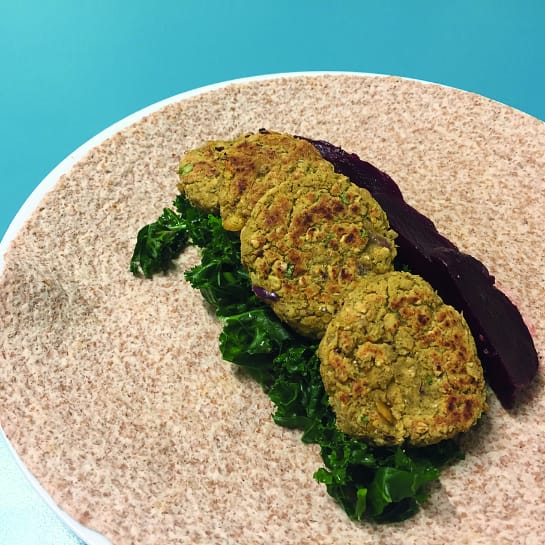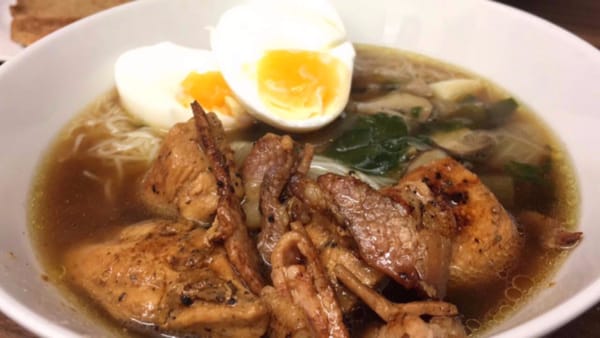Healthy, mindful eating on a budget?
Food Writer Michelle Yeap takes you through her tips and tricks for healthy and cheap eating.
One of my biggest struggles coming to university is living within a budget. I am sure many students, including myself, wonder whether it is possible to eat a healthy, balanced diet while also living on a shoestring.
For me, the supermarket is none other than the place for distraction and procrastination after spending hours and hours camping out in the library. As part of this retail therapy, I enjoy pulling my cart through the winding aisles of my local Sainsbury’s, immersing myself with thoughts of the scandalously-indulgent array of cakes, the luscious semi-sweet Lindt chocolate, or my favourite: Jaffa Cakes. Or maybe I’ll conveniently reach for the ready-to-bake fish cakes, crispy thick-cut chips, or packs of microwaveable ready-made meals. I’m not trying to deny that there are days (or most of the days) when we, as students, are running against time and the best solution to satisfy our hunger is any food that can be sorted out quickly: food without much preparation and cooking, which also means less washing up. But at the other end of the spectrum, following a dieting trend mindlessly and overly-focusing on the numbers on the weighing scale doesn’t only affect the metabolism rates of our bodies, and our general well-being, but can inadvertently lead to destroying a healthy relationship with food.
When I think about keeping up a sustainable way of eating, I think ‘could I follow this plan in the long run?’ I know with most diets I will possibly give up well before I achieve my ‘diet goal’. Hence, I learned to eat in moderation – eating what is right for my body and adhering to a mindful way of eating. I avoid spur-of-the-moment grabs of snacks and sweet treats loaded with saturated fats, salt, and sugar by not visiting these aisles at the supermarket, instead replacing them with fruits and vegetables. A bunch of cherry tomatoes, one cucumber, and a pack of four nectarines that I can snack over two to three days will not cost me more than a pound each. To satisfy cravings for a cool treat, a pot of naturally-sweetened yoghurt is a good alternative.
I also always plan my meals ahead and stick to a shopping list when I shop. Good meal prep is the best option for those of you cooking on a budget. Undoubtedly, it’s also healthier than your takeaways – just prepare two to three portions at one time, meaning you can save time on cooking and washing up. ‘But what do you cook?’, You ask. Pasta has been a go-to student meal because as long as you know how to operate the stove and boil your pasta, you’re ready to dig in – at the same time, it is super cheap. But it’s not too difficult to actually prepare your own meals, and avoid just relying on pasta by keeping your cooking simple. For example, I always stock my pantry with staples like olive oil, onion powder, garlic powder, herbs, spices, honey, and soy sauce. My shopping list will include vegetables like broccoli or carrots, which just need to be boiled, or a bag of mixed peppers for stir-fry.
More importantly, always eat intuitively. Avoid any form of distraction when eating – this means put away your phones! To consume your five a day, go for fruits and vegetables that you enjoy eating and avoid those that steer you away so that you will not find it a chore. Moreover, it is good to swap in complex carbohydrates such as wholemeal pasta and bread, leaner proteins like chicken breasts that are versatile in cooking, and healthy fats such as olive oil in your cooking. A little change can go a long way!
Some tips and tricks for your meal prep inspiration
Breakfast
Granola with dried mixed fruit V Muesli or porridge oats with nuts and fresh fruit to your preference
White bread with nutella/fruit jams V Brown bread with nut butters, without added salt or sugar
Full English V Turkey ham, mushrooms, tomatoes, scambled eggs, and paprika-marinated chicken thighs prepared with plant oils
Lunch/Dinner
Tuna mayo sandwiches V Spring water tuna, olive oil, smashed avocado, and salad/fruit
College Café wraps V Homemade burrito or falafel wraps
Pasta and store-bought sauce V Wholemeal pasta with sautéed tomatoes in garlic, herbs, and olive oil
QTR lunch V Baked sweet potatoes with chicken breast seasoned with your choice of spices and boiled vegetables
EASY PEASY FALAFEL

Here I have used Sainsbury’s wholemeal tortillas, Co-op kale and pumpkin seed houmous (which is hidden below the rest of the fillings), vacuum-packed cooked red beets, and some boiled kale.
Falafel base
- 1 can of chickpeas (400g)
- ½ cup of porridge oats
- ½ onion
- 2 cloves of garlic
- 2 tsp of olive oil
- ½ tsp of salt
- Dash of water, or more oil, if your mixture is too dry
Herbs and spices
- 2 sprigs of coriander
- ½ tsp each of cumin, paprika, and curry powder
- ½ tsp of dried basil, parsley, and thyme
- Blend all that you need for the falafel base in a blender. Alternatively, you can mash the chickpeas with a fork, chop the garlic and onion finely, and mix well.
- Add in your choice of herbs and spices. You can leave out any of those that I have used or swap them with others – it’s totally flexible!
- Once you have your falafel ‘paste’ ready, form rounds and pan fry them with 2-3 tsp of olive oil for about 10 minutes each side over medium heat until they are crispy on the outside. You can also bake them in an oven at 190 °C for 15 minutes before flipping over and baking for another 10 minutes.
- Serve them in a wrap by spreading some humous and adding leafy greens or anything else to your liking!









